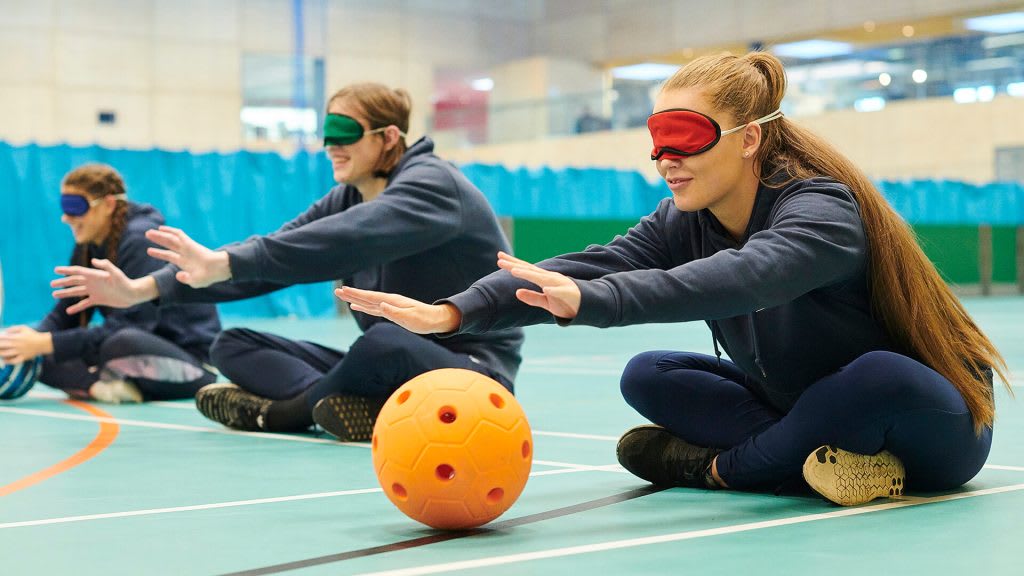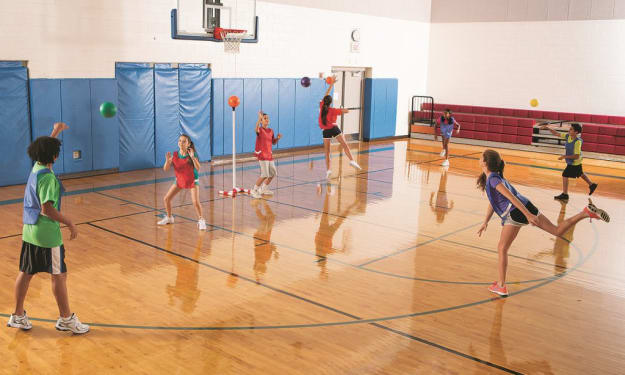Sports Science and Education: Advancements, Integration, and Future Prospects
by David Pieringer

Sports Science and Education: Advancements, Integration, and Future Prospects
Introduction
Sports science is an interdisciplinary field that combines principles from physiology, biomechanics, psychology, nutrition, and medicine to enhance athletic performance and overall physical health. The integration of sports science into educational curricula has gained momentum, driven by the growing recognition of the importance of physical education (PE) and the scientific understanding of human movement. This article explores the advancements in sports science, their incorporation into educational settings, the interdisciplinary nature of the field, and the future of careers in sports science, particularly focusing on the role of personal trainers in the age of artificial intelligence (AI).
Advancements in Sports Science
The field of sports science has seen significant advancements over the past few decades, driven by technological innovations and a deeper understanding of human physiology. Key areas of progress include:
Performance Analysis: Modern technologies like motion capture, wearable sensors, and video analysis software allow for detailed examination of athletic performance. These tools provide data on biomechanics, movement efficiency, and technique, enabling athletes and coaches to make informed decisions about training and performance improvements.
Physiological Monitoring: Advances in physiological monitoring, such as heart rate monitors, GPS tracking, and metabolic analyzers, help in assessing an athlete's physical condition in real time. This information is crucial for optimizing training loads, preventing overtraining, and enhancing recovery processes.
Sports Nutrition: Understanding the role of nutrition in athletic performance has advanced significantly. Research in sports nutrition has led to the development of personalized diet plans that cater to the specific needs of athletes, considering factors like the type of sport, training intensity, and individual metabolic responses.
Injury Prevention and Rehabilitation: Innovations in this area include the use of functional movement screening, advanced imaging techniques, and rehabilitative technologies like cryotherapy and hyperbaric oxygen therapy. These tools help in early detection of potential injuries and aid in effective rehabilitation, reducing downtime and improving recovery outcomes.
Psychological Training: The mental aspect of sports performance is now better understood, with sports psychology becoming a critical component of athlete training. Techniques like visualization, mindfulness, and cognitive-behavioral strategies are employed to enhance focus, motivation, and resilience.
Integration into Educational Curricula
The integration of sports science into educational curricula is crucial for fostering a comprehensive understanding of physical health and athletic performance from a young age. This integration happens at various levels:
School Physical Education Programs: Incorporating sports science principles into PE curricula can enhance the quality of physical education. By teaching students about biomechanics, nutrition, and injury prevention, schools can promote lifelong healthy habits and a deeper appreciation for physical activity.
Higher Education: Universities and colleges offer specialized programs in sports science, combining theoretical knowledge with practical applications. These programs often include courses in exercise physiology, biomechanics, sports psychology, and sports management, preparing students for careers in coaching, athletic training, and sports medicine.
Professional Development: Continuous education and certification programs for coaches, personal trainers, and physical educators are essential. Organizations like the National Strength and Conditioning Association (NSCA) and the American College of Sports Medicine (ACSM) provide certifications that ensure professionals stay updated with the latest research and techniques in sports science.
Interdisciplinary Studies
Sports science is inherently interdisciplinary, intersecting with fields such as health, education, and technology. These intersections create rich opportunities for collaboration and innovation:
Health and Medicine: The connection between sports science and health is profound. Research in sports science contributes to understanding how physical activity affects overall health, disease prevention, and rehabilitation. Sports scientists often work with healthcare professionals to develop programs that promote physical health in diverse populations.
Education and Pedagogy: Integrating sports science into educational curricula involves pedagogical strategies that make learning about physical health engaging and effective. This includes using interactive technologies, experiential learning, and project-based approaches to teach students about the science of movement and health.
Technology and Engineering: Advances in technology have revolutionized sports science. Engineering innovations lead to the development of new training equipment, wearable devices, and software applications that provide real-time feedback and data analysis. Collaboration between sports scientists and engineers results in the creation of tools that enhance both athletic performance and everyday fitness.
Psychology and Sociology: Understanding the psychological and social aspects of sports is crucial for improving athlete performance and promoting inclusive sports environments. Sports psychology focuses on mental training techniques, while sports sociology examines the social impact of sports on communities and cultures.
The Future of Personal Training and AI
The role of personal trainers is evolving with advancements in AI and technology. While personal trainers provide personalized fitness coaching and motivation, AI offers new tools that can augment and, in some cases, replace traditional training methods. The future of personal training involves several key trends:
AI-Driven Fitness Apps: AI-powered fitness apps offer personalized workout plans based on user data such as age, weight, fitness level, and goals. These apps use algorithms to adjust workouts in real-time, providing feedback and suggestions to optimize performance. Examples include apps like Freeletics, which use AI to create customized training programs.
Virtual Personal Trainers: Virtual trainers use AI and machine learning to simulate the experience of a personal trainer. These systems can provide real-time feedback on exercise form, suggest modifications, and track progress. Companies like Peloton and Mirror are already integrating AI into their fitness platforms to offer interactive and adaptive training sessions.
Wearable Technology: Wearable devices such as smartwatches and fitness trackers collect data on various physiological parameters, including heart rate, steps taken, and calories burned. AI algorithms analyze this data to provide insights and recommendations, enhancing the effectiveness of personal training.
Augmented Reality (AR) and Virtual Reality (VR): AR and VR technologies create immersive training environments. For example, VR can simulate different sports scenarios, allowing athletes to practice skills in a controlled, virtual setting. AR can overlay training instructions and feedback onto the real world, enhancing the training experience.
Data Analytics: AI-driven data analytics enable a deeper understanding of training effectiveness. By analyzing large datasets, AI can identify patterns and trends that human trainers might miss. This helps in developing more effective training programs and injury prevention strategies.
The Role of Human Personal Trainers
Despite the advancements in AI and technology, the human element remains crucial in personal training. Personal trainers offer several advantages that technology cannot fully replicate:
Personal Connection: Human trainers build relationships with their clients, providing motivation, accountability, and emotional support. This personal connection is often a key factor in maintaining long-term fitness commitments.
Customization and Adaptability: While AI can create personalized plans, human trainers can adapt to the unique needs and circumstances of each client. They can modify exercises on the fly, provide nuanced feedback, and address specific concerns that technology might overlook.
Holistic Approach: Personal trainers often take a holistic approach to health and fitness, considering factors like mental well-being, lifestyle, and personal preferences. This comprehensive perspective is essential for creating sustainable fitness habits.
Expertise and Experience: Experienced trainers bring a wealth of knowledge and practical experience that can enhance training outcomes. They can draw on their expertise to handle complex situations, such as training clients with specific health conditions or injuries.
The Future of Sports Science Education
The future of sports science education is bright, with several trends shaping its development:
Integration of Technology: The use of technology in sports science education will continue to grow. Virtual labs, online simulations, and digital tools will enhance learning experiences, making complex concepts more accessible and engaging.
Interdisciplinary Programs: As the field becomes more interdisciplinary, educational programs will integrate courses from diverse fields such as computer science, psychology, and engineering. This will equip students with a broad skill set applicable to various careers in sports science and related fields.
Focus on Research and Innovation: Emphasizing research and innovation will be crucial. Educational institutions will foster a culture of inquiry, encouraging students to engage in research projects and contribute to the advancement of sports science knowledge.
Global Collaboration: International collaboration in sports science research and education will increase. This will facilitate the exchange of ideas, best practices, and innovations, enriching the field and promoting global health and athletic performance.
Lifelong Learning: The rapid pace of advancements in sports science and technology necessitates lifelong learning. Professionals will need to engage in continuous education to stay current with the latest developments and maintain their expertise.
Conclusion
Sports science has come a long way, with advancements in technology and a deeper understanding of human physiology driving significant progress. Integrating sports science into educational curricula enhances the quality of physical education and promotes lifelong health and fitness. The interdisciplinary nature of sports science creates opportunities for collaboration and innovation across fields such as health, education, and technology.
The role of personal trainers is evolving with the advent of AI and technology, but the human element remains irreplaceable. The future of sports science education is promising, with trends such as the integration of technology, interdisciplinary programs, and a focus on research shaping its development.
As we look ahead, the continued advancement of sports science will undoubtedly enhance our understanding of physical health and athletic performance, benefiting individuals and society as a whole. By embracing these changes and fostering a collaborative, innovative approach, we can ensure that sports science continues to thrive and make a positive impact on the world.
About the Creator
David Pieringer
Welcome to my page! I'm a dedicated writer and student with a passion for both education and sports. Balancing my love for learning with my athletic pursuits, I strive to excel in everything I do.
Enjoyed the story? Support the Creator.
Subscribe for free to receive all their stories in your feed. You could also pledge your support or give them a one-off tip, letting them know you appreciate their work.






Comments
There are no comments for this story
Be the first to respond and start the conversation.